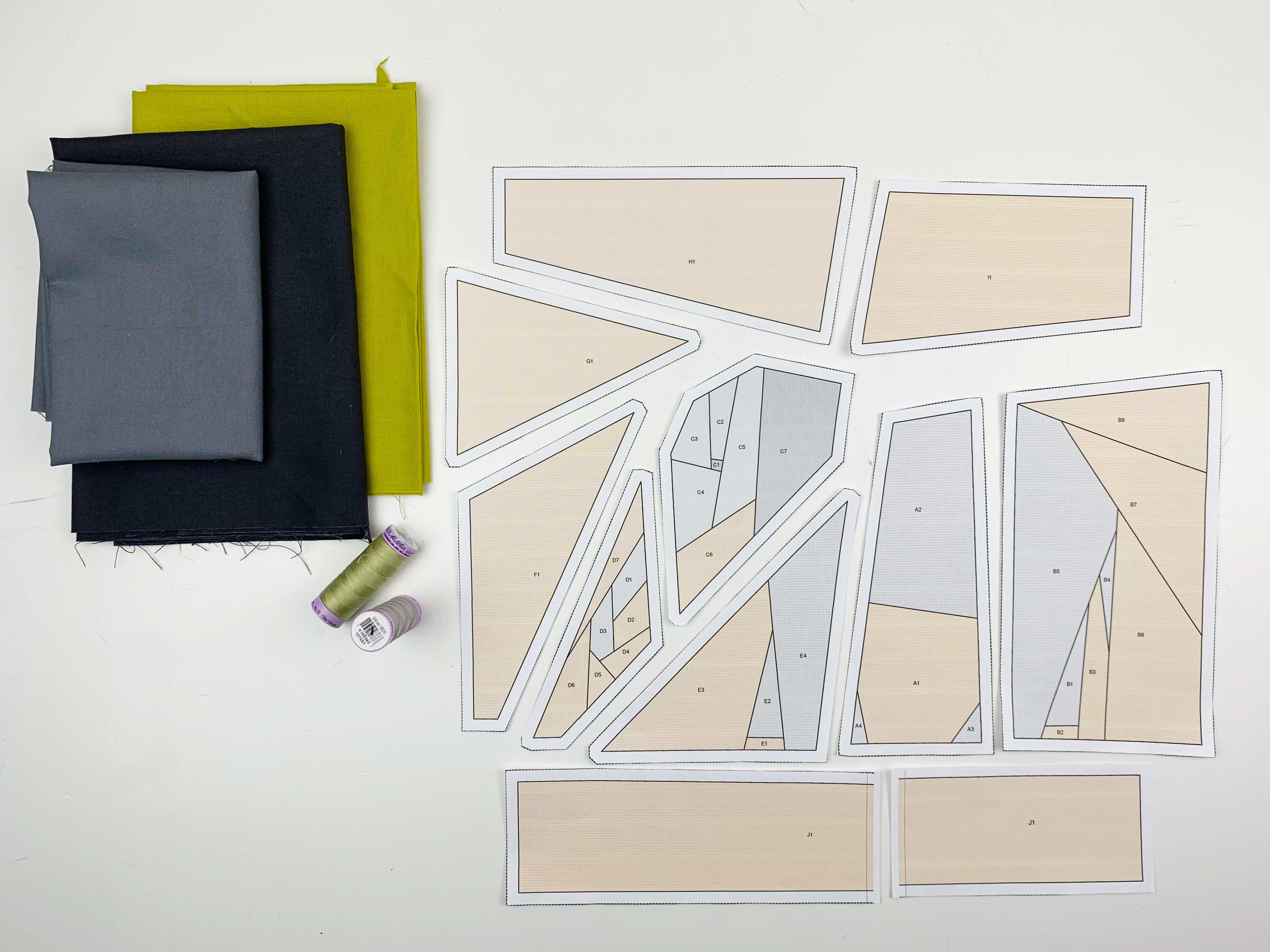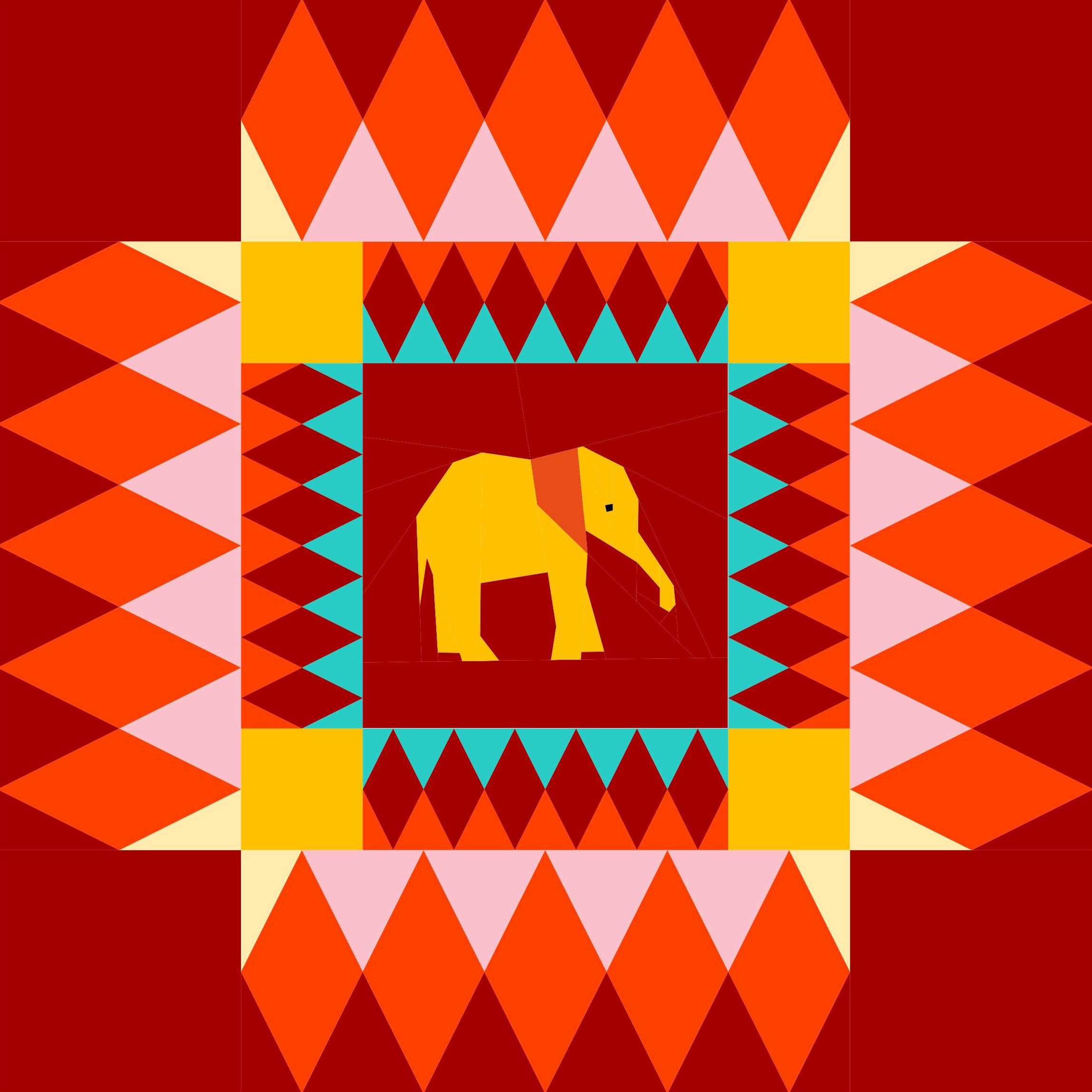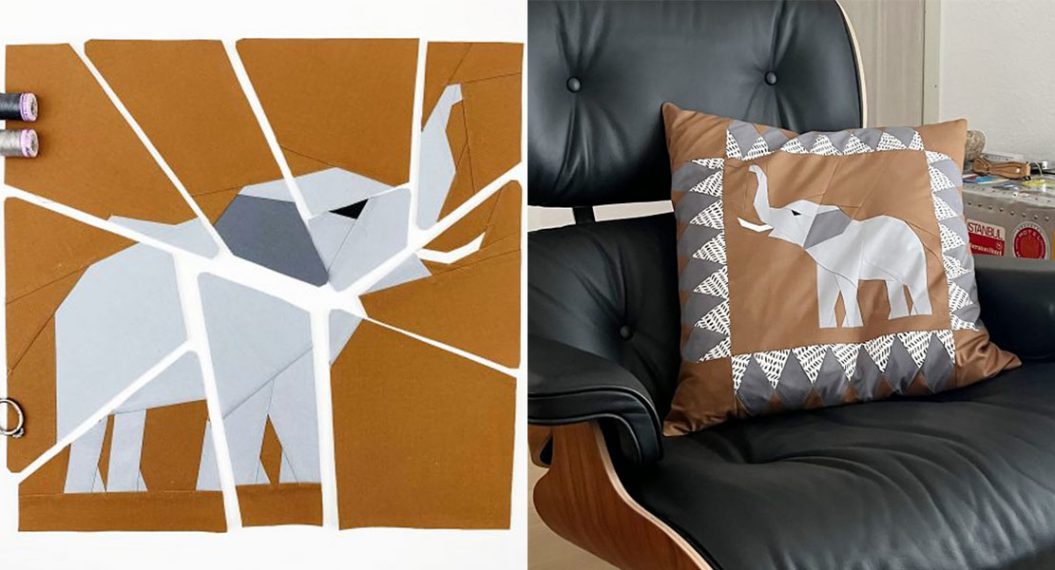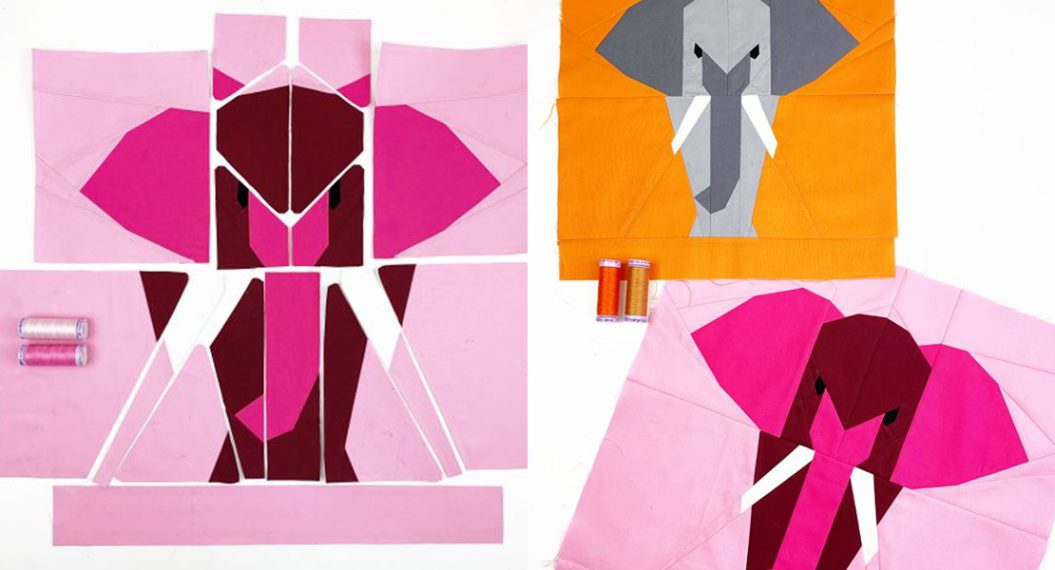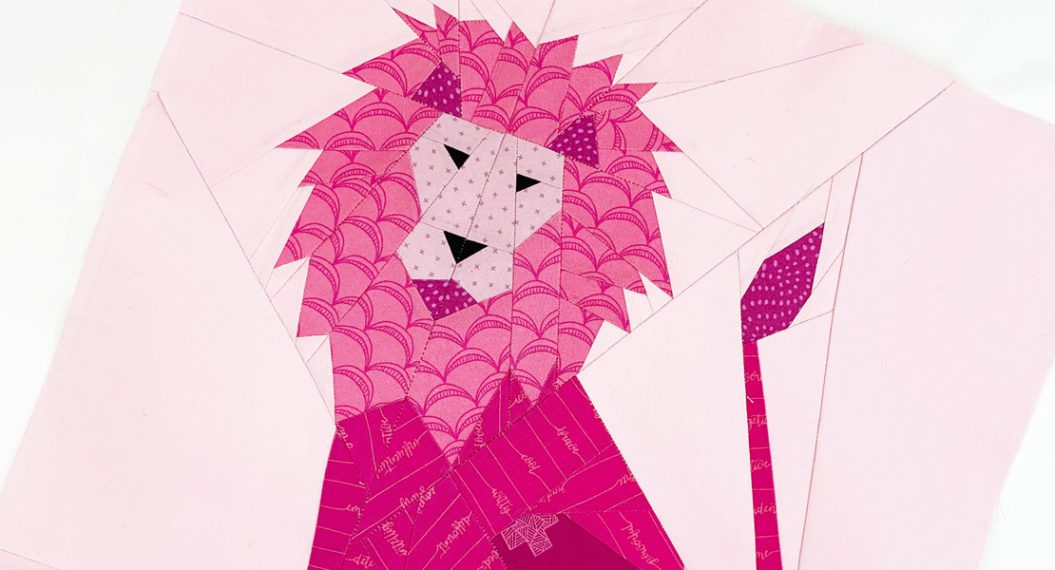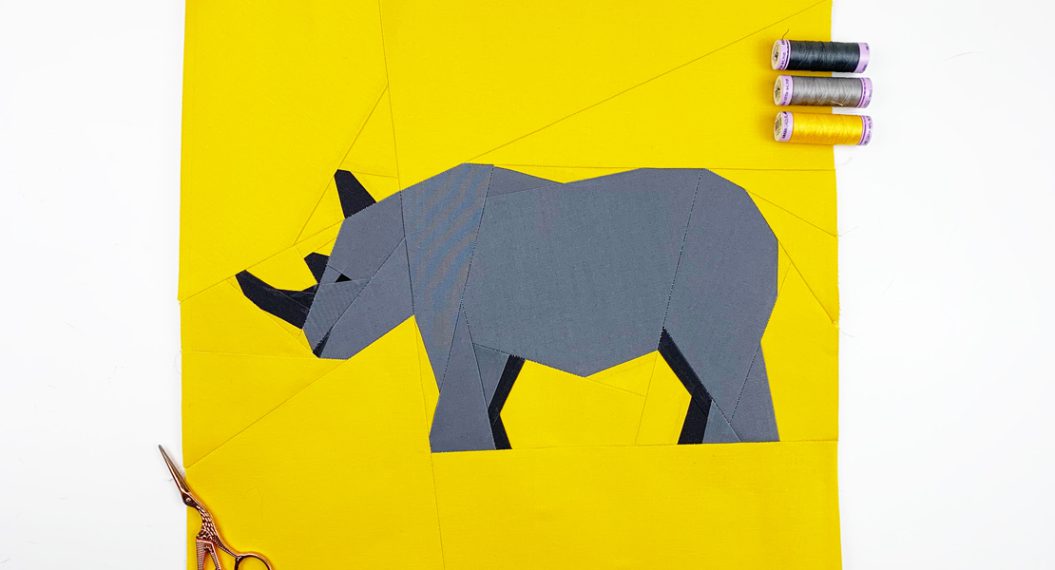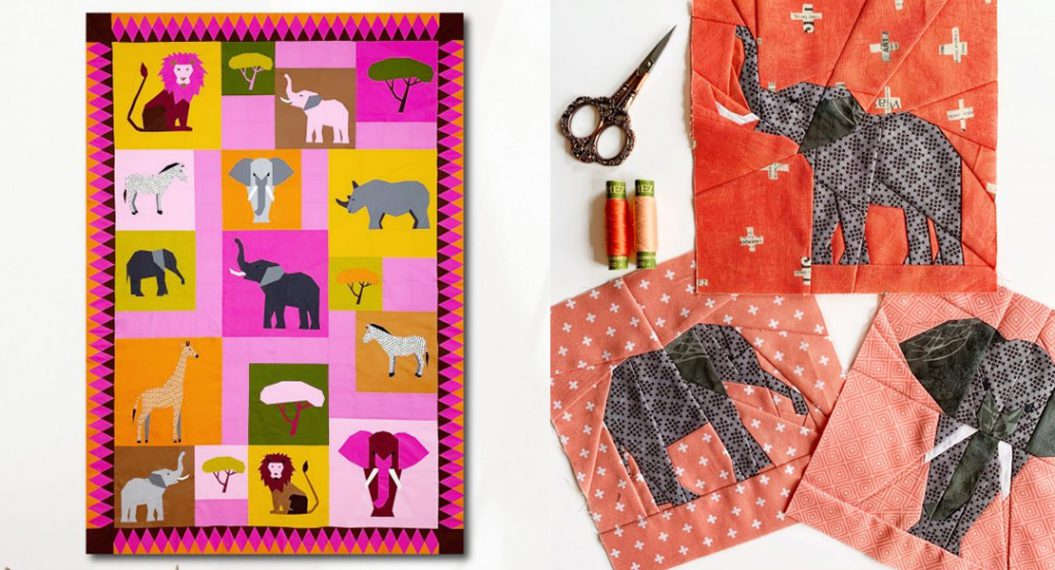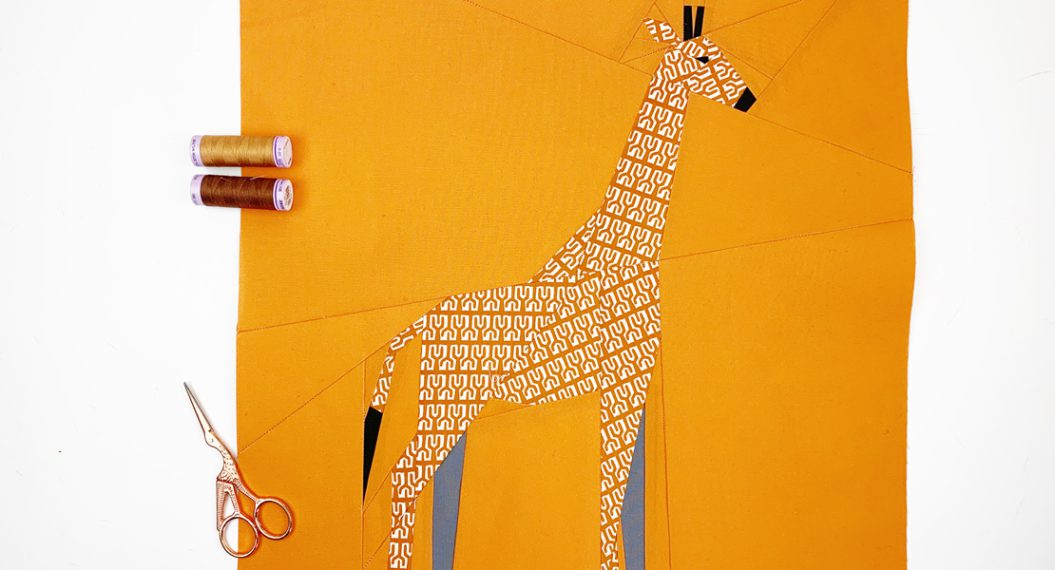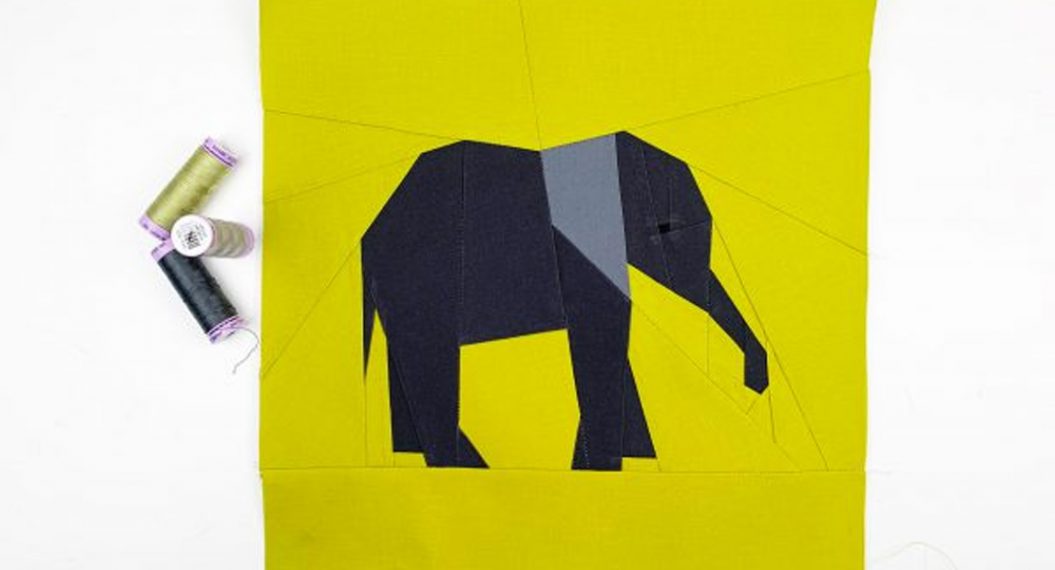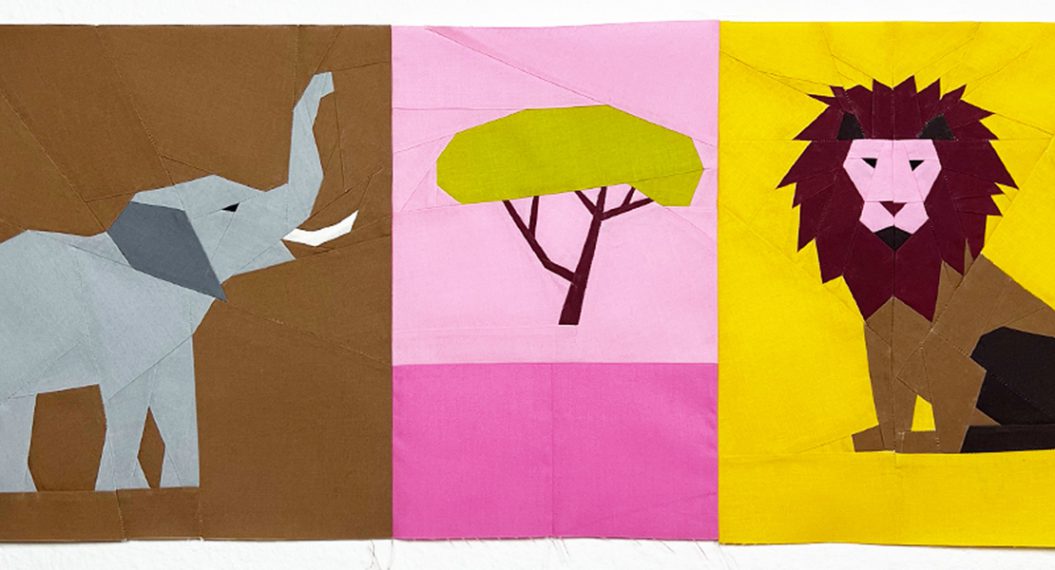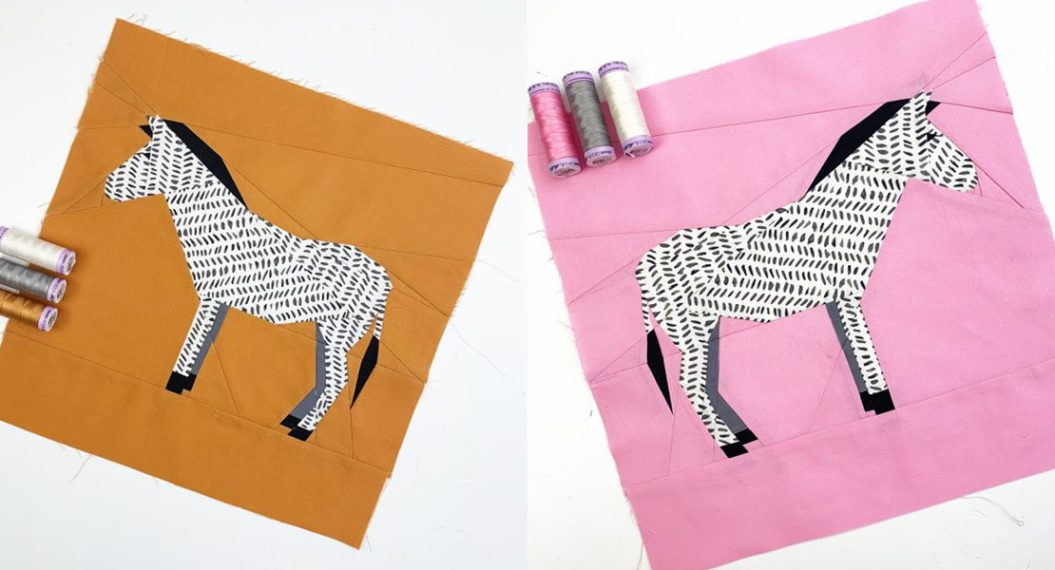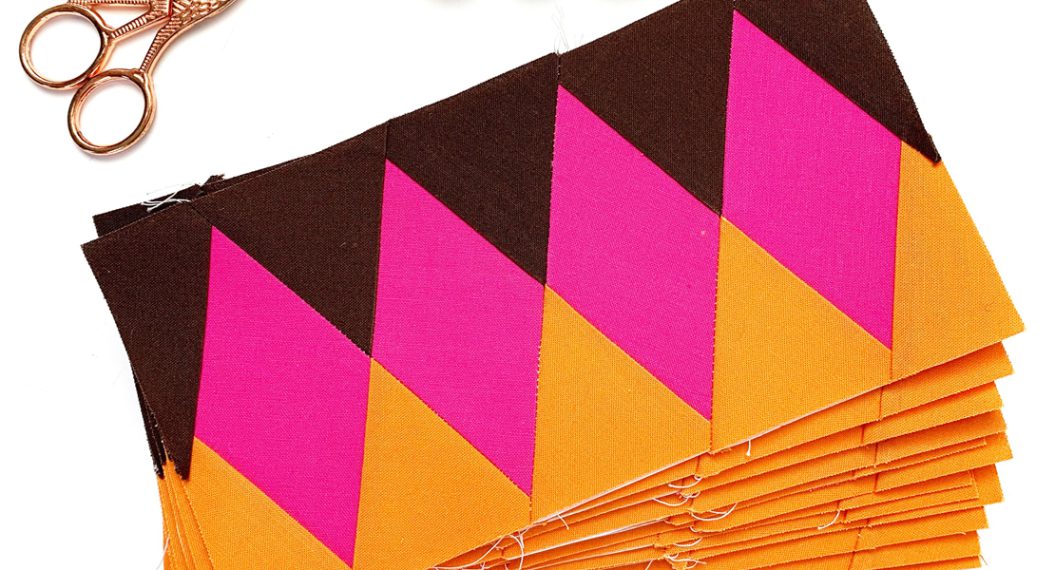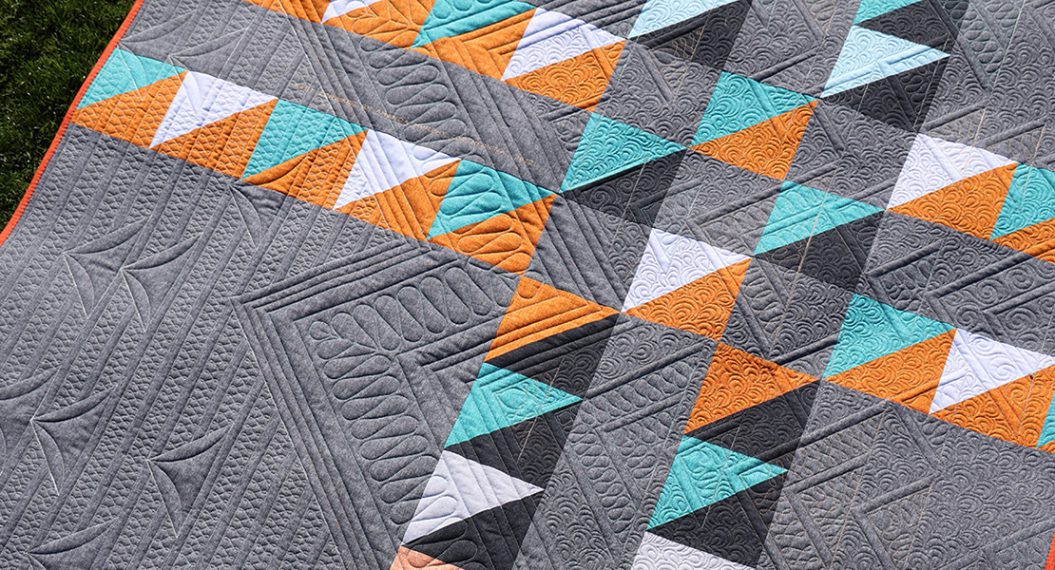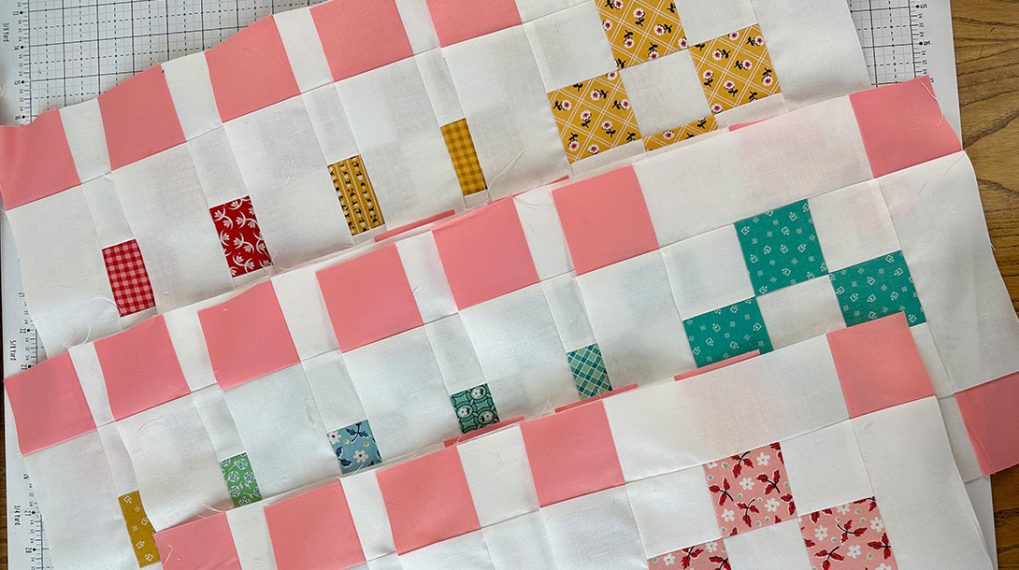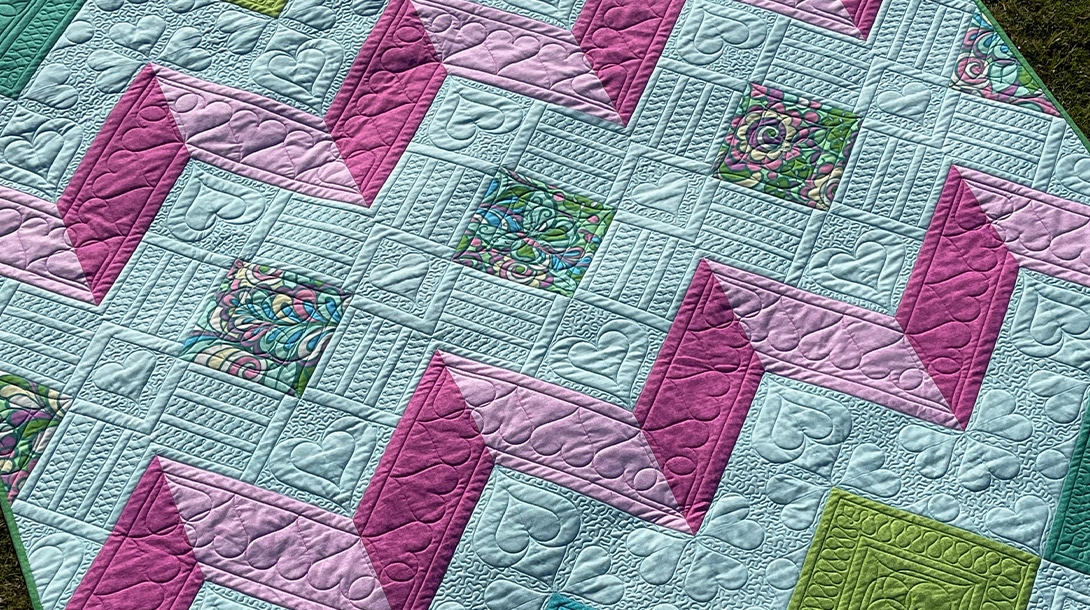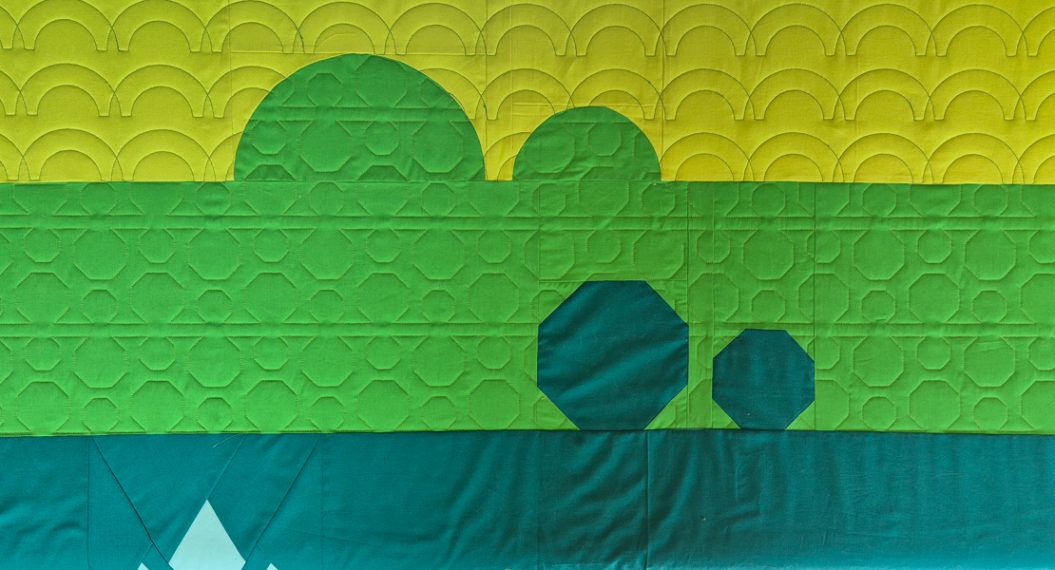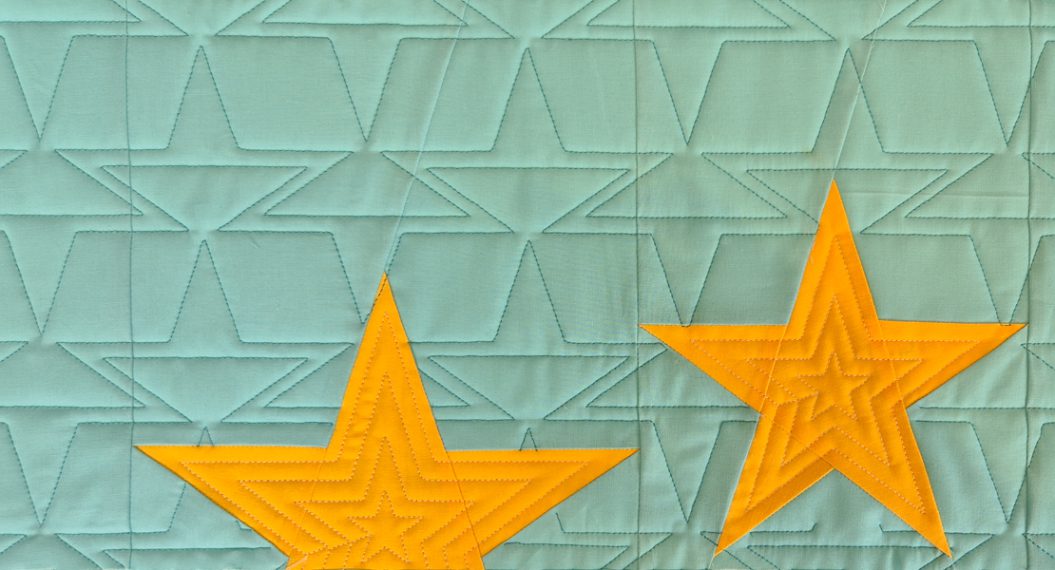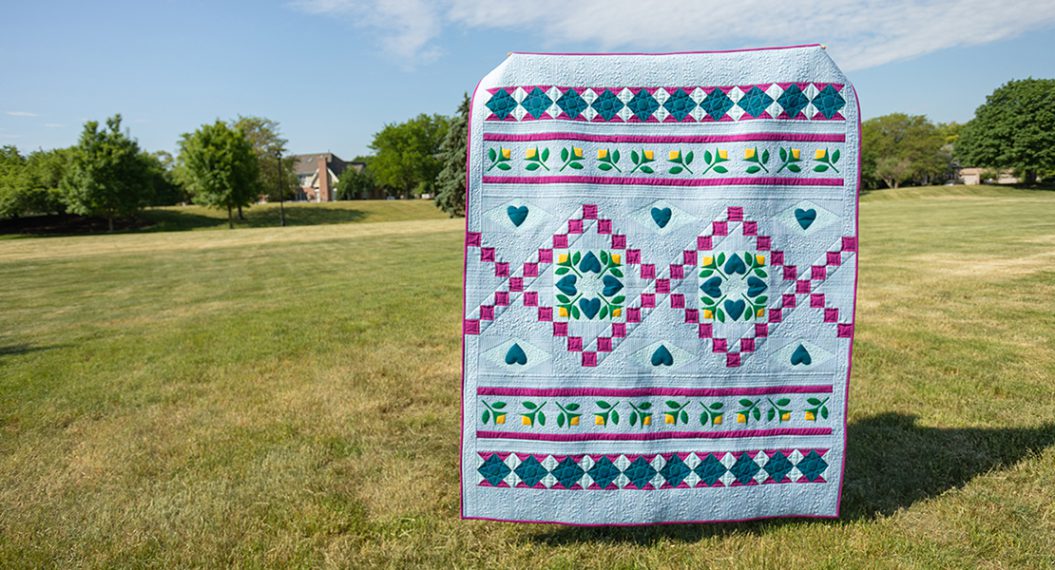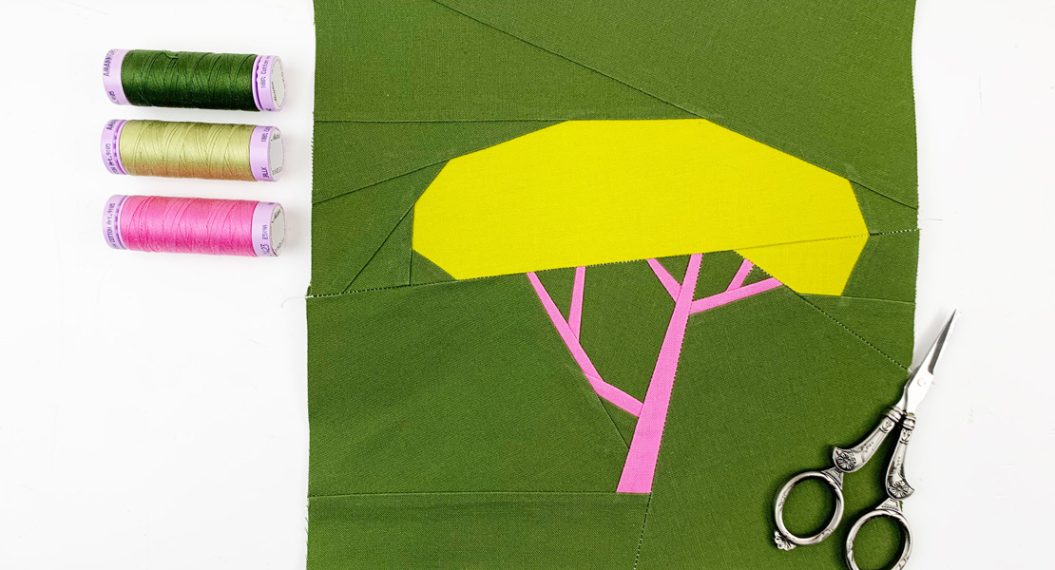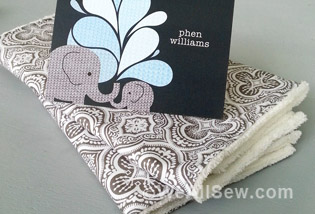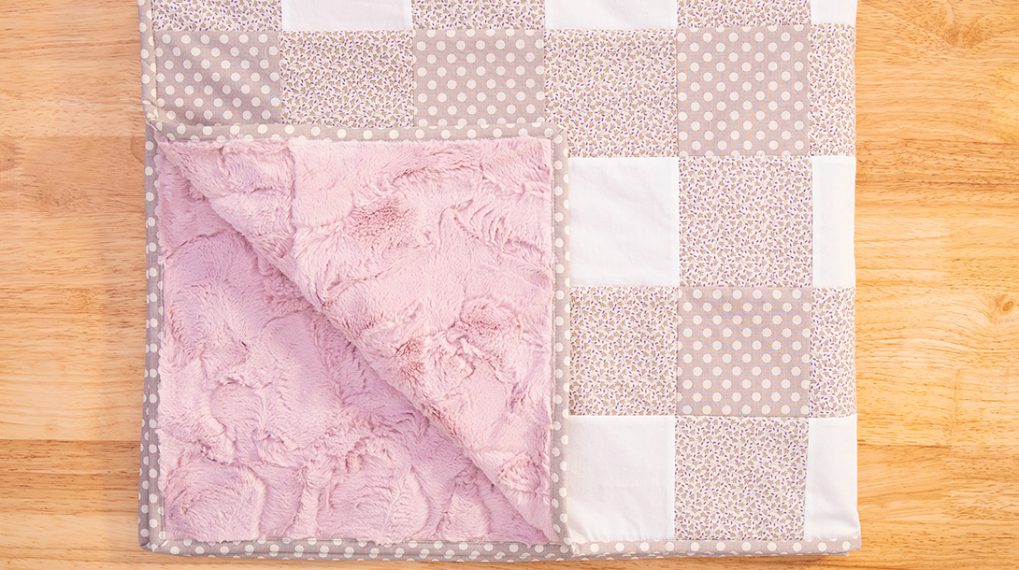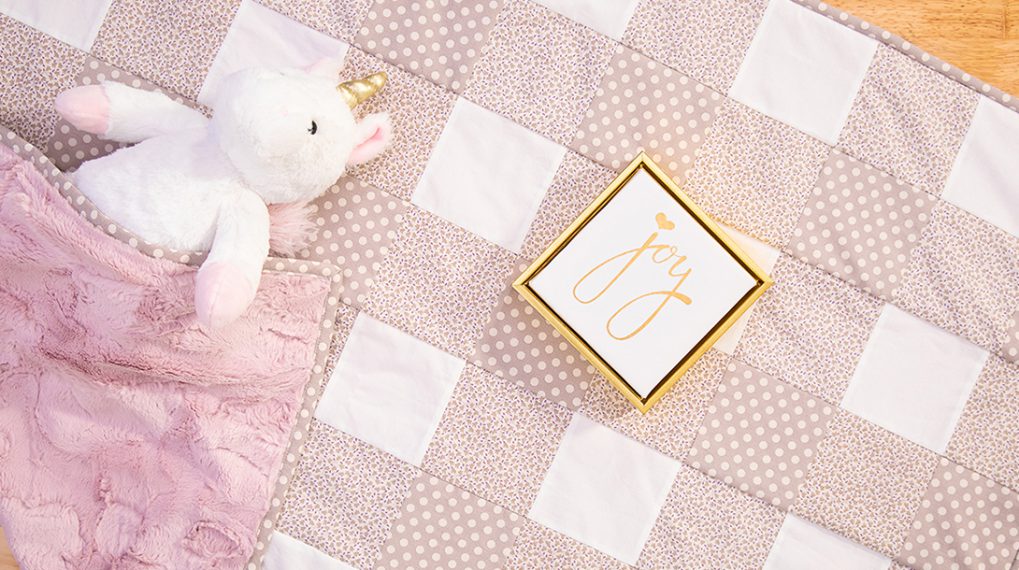Quilt Safari, Part Six: Sewing the Baby Elephant
Hello and good morning, dear Foundation Paper Piecing enthusiasts. Today we are sewing the baby elephant.
Elephants are the largest land mammals living on earth today. They have the biggest head, the longest trunk and the biggest brain. Newborn elephants weigh around 100 kg at birth, which corresponds to three to four percent of the body mass of an adult elephant. Like rhinos, elephants are also threatened with extinction and their ivory tusks have been used for thousands of years for art objects and luxury items.
Elephants are absolute family animals. Their herds in Africa consist of up to 100 animals (in Asia there are slightly fewer). The herds are led by a particularly strong and experienced elephant cow. Social cohesion is extremely important. Naturally, they all look after the baby elephants together.
For this reason, a baby elephant quilt block is a MUST in the safari quilt, don’t you agree?
Do You Only Want to Sew the Baby Elephant?
Not taking part in the quilt safari, but you’re an elephant fan? No problem, the pattern is also available separately: Pattern for the baby elephant
You are now getting better and better at paper piecing, and I am sure you no longer have any doubts that FPP is great fun.
What is the difference between traditional piecing and foundation paper piecing? First of all, FPP has many advantages over traditional piecing:
- You can start sewing straight away, no need to pre-cut fabric.
- You don’t have to pay attention to the grain of the fabric.
- You can always use small scraps of fabric.
- You can sew super beautiful and detailed quilt blocks in a relatively short time.
- You can create a really special sewing project with just one quilt block.
- You don’t need to starch your fabric, simply iron it.
On the other hand, there are almost no disadvantages:
- You have to print out the segments.
- You have to remove the paper after sewing.
Are you convinced? Just take a look at the many fantastic blocks you have already sewn up in the Quilt Safari, that’s persuasive enough, isn’t it?
Are You New to the Quilt Safari?
Is this your first time reading about the Quilt Safari? Then hello and welcome! You can immerse yourself in the savannah with us at any time and observe the wild animals. Together we will sew a safari quilt made with FPP blocks with wild animal designs.
The patchwork instructions appear block by block on the WeAllSew blog. You can find all previous articles here: Quilt Safari on the BERNINA Blog
The best way to start is to read my first safari blog post, in which I put together the most important information: Start of the BERNINA Quilt Safari
Let’s Sew the Baby Elephant
Fabric Selection
First of all, here is my fabric selection for the baby elephant in the safari quilt. Again, I am using solids. As always in the Quilt Safari, you are free to work with your own fabrics.
12″x 12″ baby elephant quilt block:
- Light green (background)
- Charcoal (baby elephant)
- Medium gray (ear)
- Black (eye)
1. For the baby elephant pattern you have to glue another segment.
2. Now sew the baby elephant in the order you prefer. As I mentioned before, I always start with the parts that have no seams. Then I sew one segment after the other.
For those of you who are new to this: we sew the segments using the foundation paper piecing method, just as we did with the border blocks (see the first instruction article of the Quilt Safari).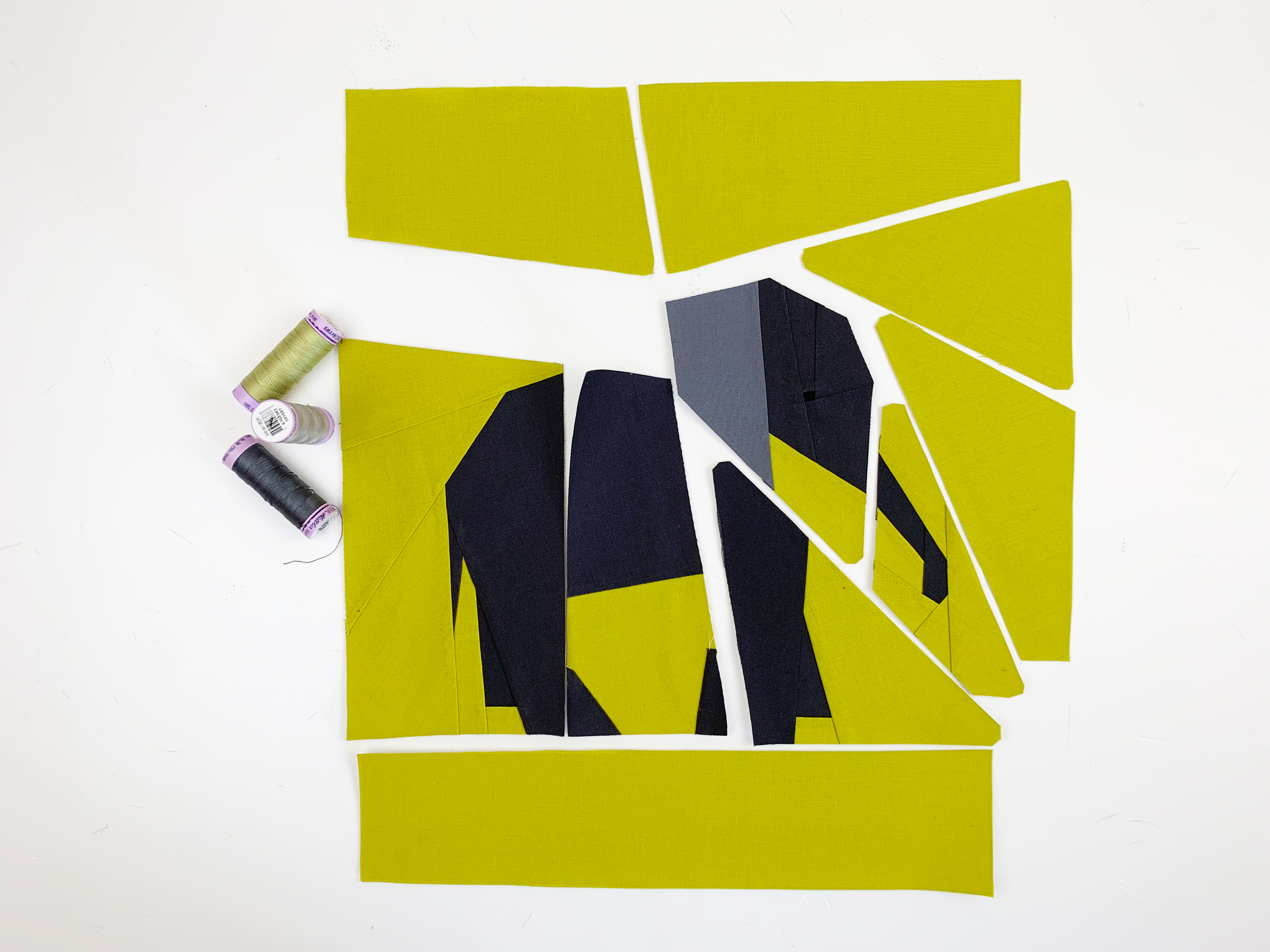
3 . When all the segments have been sewn, join them again according to the assembly instructions in the pattern. Remember to remove the paper from the seam allowance after sewing two segments together. This will reduce bulk and make it easier for you to get flatter seams.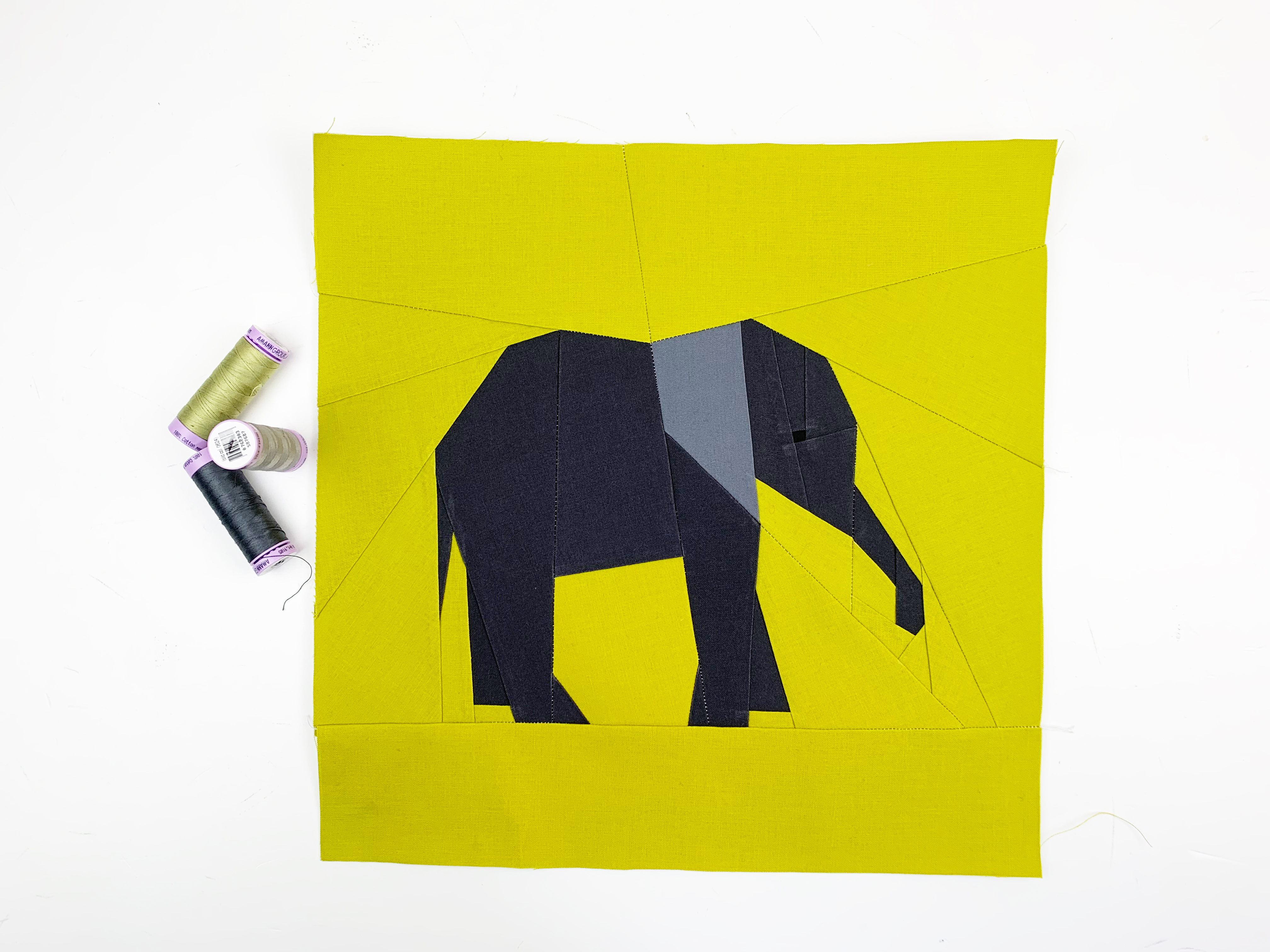
Well, what do you think? This baby almost looks real, doesn’t it?
Now I’ll show you a few ideas for cushion covers with the baby elephant pattern as a center piece and the use of this border quilt block pattern as a solution for the border.
As always, this is just an inspiration. No pressure to sew, buy or anything else – hopefully just pure creativity.
I’m having a hard time deciding which color variation to sew. I think both are really beautiful. Maybe you can help me decide.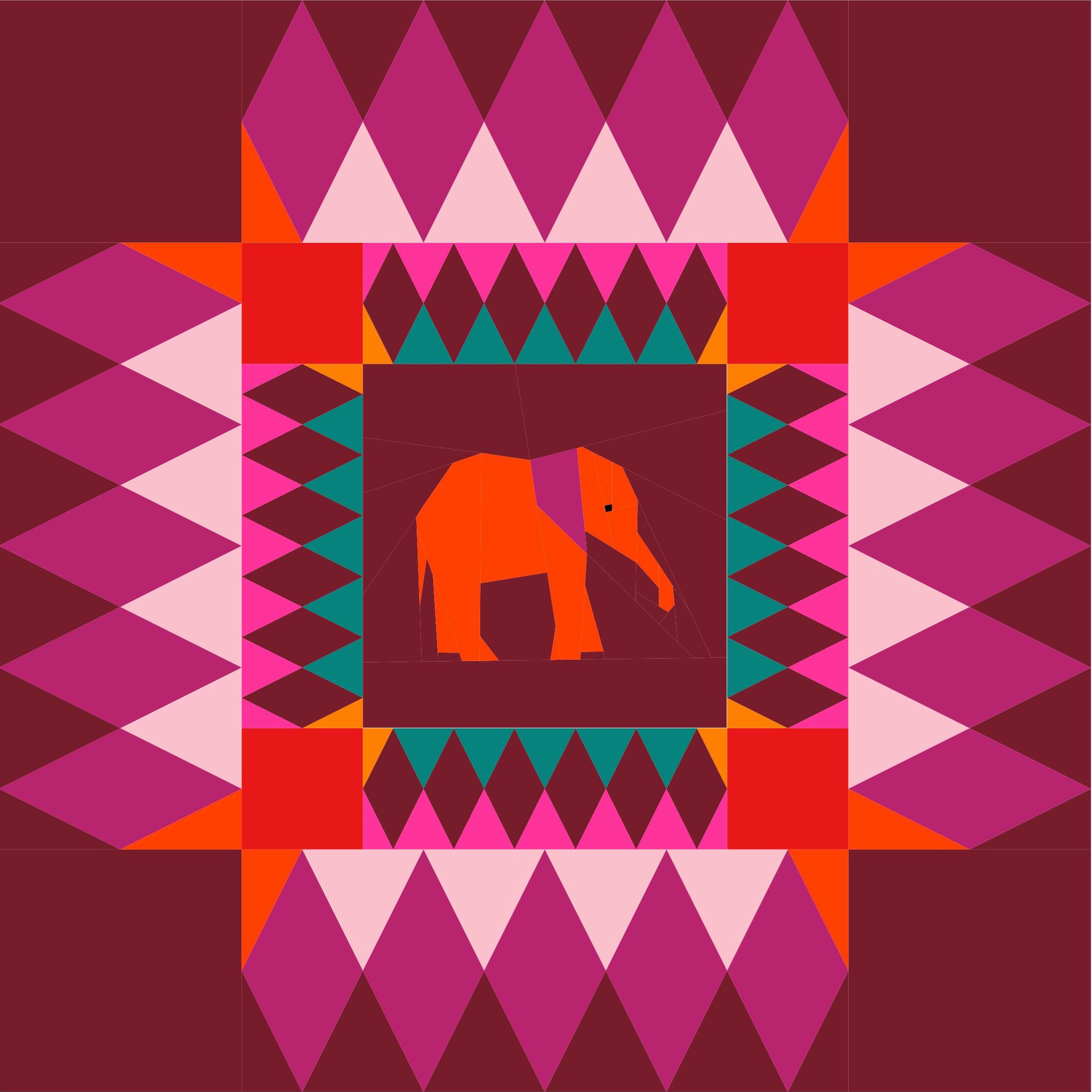
Now I Want to See Your Baby Elephants!
Did you have fun sewing them? The baby elephant block really isn’t that complicated, is it? If you have any questions, please ask them in the comments.
I look forward to seeing pictures of your blocks. Show them to me on social media or in the Community Section of the blog! Always use the hashtag #quiltsafari on Instagram and Facebook. In the Community Section of the blog, don’t forget to select the “Quilt Safari” participation campaign.
See you next time,
warm sewing greetings,
Ingrid

